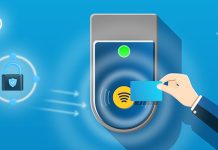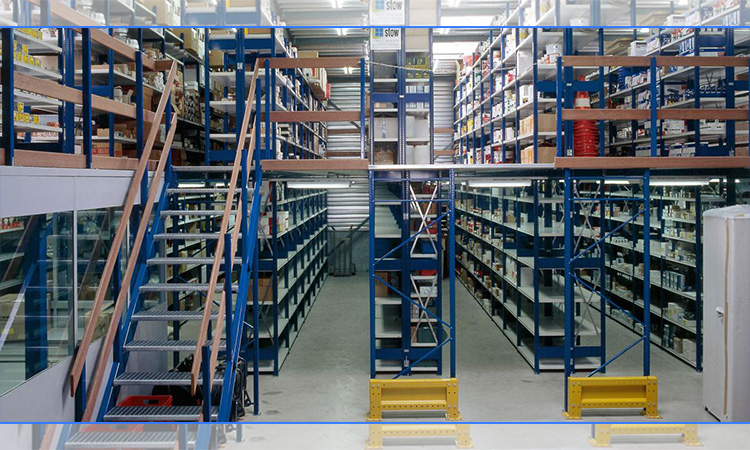In the realm of access control systems, the emergence of RFID key fobs has sparked a remarkable revolution. These small yet powerful devices have reshaped how we secure and manage entry to buildings, facilities, and even vehicles. In this article, we delve into the captivating journey of RFID-based key fobs, exploring their evolution, advancements, and the myriad of benefits they bring to access control systems. By delving into the semantic terms associated with this technology, we aim to provide you with a comprehensive understanding of the profound impact and significance of RFID key fobs in modern access control.
What is an RFID Key Fob?
An RFID key fob is a physical device that can lock or unlock a door through radio waves. Key fobs allow tracking, managing, and restricting access to buildings without traditional keys.
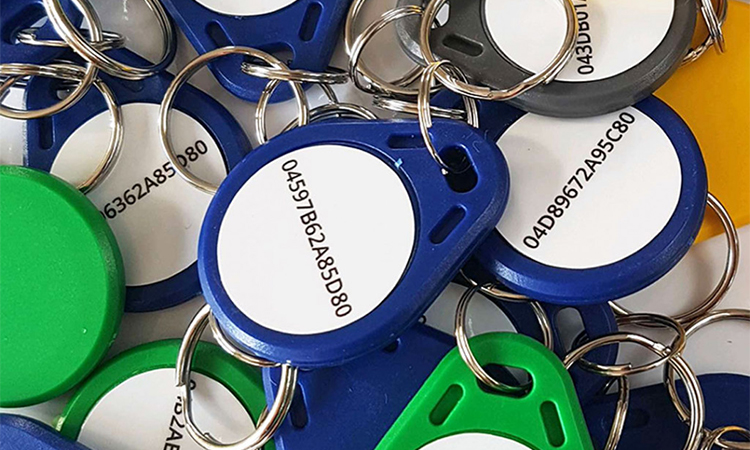
People mainly use early RFID systems for car doors operated in infrared form. Criminals could easily duplicate them. As research into RFID has intensified, more effective vital fobs have been developed.
The key fob uses the interrogation function via RF – response authentication. RFID-based key and cards are often used with various access control systems. It provides a way for companies to manage access to their facilities. Companies can view or adjust the access rights of company employees to suit their needs.
Evolution of RFID Key Fobs
Traditionally, access control systems relied on physical keys and locks. However, introducing RFID key fobs marked a significant shift in this landscape. RFID, which stands for Radio Frequency Identification, utilizes electromagnetic fields to transmit data between a fob and a reader wirelessly. This wireless communication eliminates the need for physical contact, offering a more convenient and efficient access control solution.
Advancements in RFID technology have played a crucial role in the evolution of key fobs. Modern RFID key fobs incorporate sophisticated features, such as encrypted data transmission, anti-tampering mechanisms, and long reading distances. These advancements have significantly enhanced the security and reliability of access control systems.
Moreover, these keyless entry systems have embraced integration with mobile devices, leveraging the widespread adoption of smartphones. With mobile integration, individuals can conveniently use their smartphones as virtual key fobs. It allows for seamless access management and eliminates the need for carrying additional physical devices.
Another noteworthy development in the realm of RFID key fobs is the utilization of Near Field Communication (NFC) technology. NFC-enabled key fobs enable users to tap their fob against an NFC reader for quick and effortless access. This technology has found widespread applications in various sectors, including transportation, hospitality, and events management.
How RFID Key Fobs Work in Access Control Systems
Access control systems rely on the seamless interaction between RFID key fobs and RFID readers to grant or deny entry to secured areas. Understanding the inner workings of this process sheds light on the effectiveness and reliability of RFID-based keys in access control. Let’s delve into the details of how RFID-based key work within access control systems:
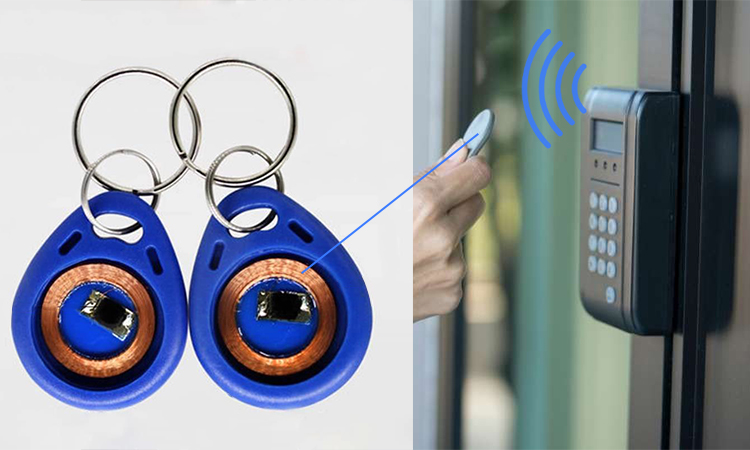
Components of an RFID System: Key Fobs and Readers
RFID Key Fobs
These compact devices house a microchip and an antenna. They work in unison to transmit and receive information. The microchip holds unique identification data associated with each key fob.
It mainly communicates with the RFID label in a specific reader device for unlocking, locking, or other purposes. It works in a similar way to a barcode system. You can see barcodes on the back of the key fob’s physical product or the credit card‘s magnetic stripe. These barcodes require a reader to get the information. It primarily communicates with the reader and sends a specific frequency for a specified purpose. You can open the door if you hold or wave the correct RFID key fob in front of the reader.
The following video introduces various RFID keychains made from different materials:
RFID Readers
These devices emit electromagnetic fields and are strategically placed at entry points. They are responsible for communicating with RFID-based key fobs. They also relay the collected data to the access control system for authentication and decision-making.
RFID Frequencies: Low Frequency (LF), High Frequency (HF), and Ultra-High Frequency (UHF)
RFID key fobs operate on different frequencies depending on the specific use case and reading distance requirements.
- Low Frequency (LF): Key fobs operating at frequencies around 125 kHz offer shorter to medium-range reading distances. They are suitable for applications such as building access.
- High Frequency (HF): Key fobs operating around 13.56 MHz provide improved anti-collision capabilities and better security features. They are commonly used in applications like contactless payment and public transportation systems.
- Ultra-High Frequency (UHF): Key fobs operating at frequencies ranging from 860 MHz to 960 MHz offer long-range reading capabilities. This makes them suitable for applications like vehicle access control or inventory management.
The Communication Process: Fob to Reader to Access Grant
When an individual presents an RFID-based key fob near an RFID reader, the reader emits an electromagnetic field.
The antenna within the key fob captures the energy from the reader’s field, powering the embedded microchip.
The microchip, energized by the electromagnetic field, transmits its unique identification data back to the reader using radio waves.
The reader receives and relays the data to the access control system for verification and decision-making.
The access control system compares the received data with the authorized information stored in its database to determine whether access should be granted or denied.
Security Protocols and Encryption in RFID Key Fobs
RFID-based keys are used to ensure the confidentiality and integrity of transmitted data. These key cards contain various security protocols and encryption algorithms.
These measures protect the information stored within the key fob and prevent unauthorized access or tampering attempts.
Encryption techniques secure the communication between the key fob and the reader. This also ensures that the transmitted data remains confidential and protected.
Anti-Collision Mechanisms for Efficient Access Control
In scenarios where multiple RFID-based key fobs are in the vicinity of an RFID reader simultaneously, anti-collision mechanisms come into play.
These mechanisms enable the reader to handle and process multiple signals concurrently. It ensures efficient and accurate access control even in crowded environments.
RFID Key Fob vs Proximity Key
RFID-based key fobs and proximity keys are used for access control, but they use different technologies to achieve this.
RFID key fobs use radio frequency identification (RFID) technology to communicate with an RFID reader. The fob contains a small chip that emits a unique code or signals when held near the reader. The reader then verifies the code and grants or restricts access based on the settings configured in the access control system. RFID-based key fobs are typically small, lightweight, and durable, and they can be attached to a keychain or carried in a pocket.
Proximity keys, on the other hand, use near-field communication (NFC) technology to transmit data wirelessly to a reader. Proximity keys are often used in vehicles and can be used to lock or unlock the doors, start the engine, and control other functions. They are typically larger than RFID key fobs and may be shaped like a traditional key.
Regarding access control, RFID-based key fobs are often more popular than proximity keys. This is because they are more affordable, easier to use, and have a longer range. On the other hand, proximity keys are more commonly used for vehicle access control due to their higher security features and more advanced functionality.
Here’s a table comparing RFID key fobs and proximity keys:
| Feature | RFID Key Fob | Proximity Key |
|---|---|---|
| Technology | RFID | NFC |
| Communication Range | Up to several feet | Less than an inch |
| Application | Access Control, Asset Tracking | Vehicle Access |
| Security | High | High |
| Customization | Highly Customizable | Limited Customization |
| Size | Small and Lightweight | Larger and Bulkier |
| Cost | Generally Lower | Generally Higher |
| Integration | Easily Integrated with Access Control Systems | Integrated with Vehicle Systems |
Benefits of RFID Key Fobs in Access Control Systems
RFID key fobs offer many benefits in access control systems, contributing to their growing popularity and adoption. Let’s explore some of these advantages:
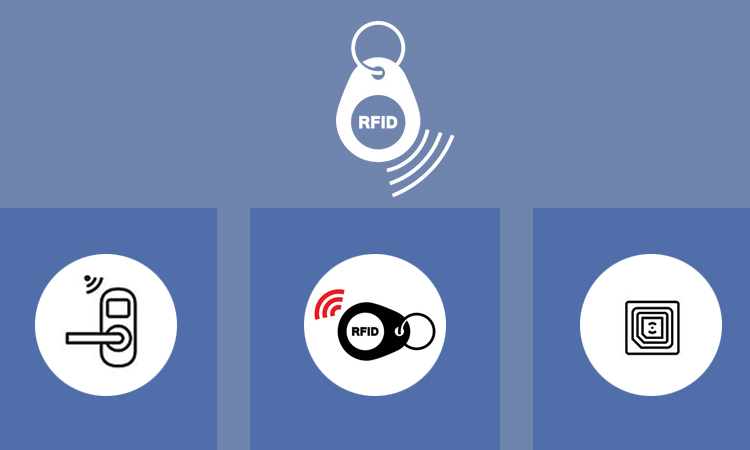
Convenient and Contactless Authentication
With this keyless entry system, users can access secured areas simply by holding or tapping their fob near a reader. This contactless authentication eliminates the need for physical insertion or swiping, saving time and effort for both users and administrators.
Efficient and Speedy Access Management
RFID-based keys enable swift and efficient access management, particularly in high-traffic areas. Users can gain entry quickly, reducing congestion and improving the overall flow of people.
Enhanced Security Measures and Anti-Counterfeiting
Modern RFID-based key fobs incorporate advanced security features like encrypted data transmission and unique identifiers. These measures make it extremely difficult for unauthorized individuals to duplicate or counterfeit key fobs, significantly enhancing security.
Seamless Integration with Existing Systems
RFID-based key fobs can seamlessly integrate with existing access control systems. This compatibility ensures a smooth transition for organizations looking to upgrade their security infrastructure without requiring a complete overhaul.
Tracking and Monitoring Capabilities
RFID-based keys can be leveraged for tracking and monitoring purposes. Administrators can monitor entry and exit logs by associating each fob with an individual, providing valuable insights into employee or visitor activity.
Flexibility and Customization Options
RFID-based key fobs offer flexibility in terms of form factors. It allows users to choose the design and style best suits their preferences. Customization options, such as branding or personalized identification, are also available, adding a touch of uniqueness and exclusivity.
Improved User Experience and Satisfaction
RFID-based key fobs offer a user-friendly experience. It eliminates the frustrations associated with lost or forgotten keys. Additionally, the convenience of contactless authentication and swift access contributes to overall user satisfaction.
Easy to Operate
When an electronic locking system is used to unlock items, it makes the matter incredibly easy. Even disabled people who have difficulty turning physical keys can use them efficiently.
From a business perspective, it reduces the hassle of business manual security checks. Assuming you are running a hotel, using it will increase customer satisfaction. Because it is very modern, it is easy for customers to use.
The promotion and application of RFID key cards have significantly reduced the incidence of theft. Using it can effectively secure your business with less property loss. Although it may be expensive, it is worth the money if you consider it a small investment to protect a more significant investment.
How to Copy RFID Key Fob?
You can obtain the original key fob information through some legitimate channels to make a copy. There are four ways you can duplicate your key fob.
Online RFID Key Fob Duplication Service
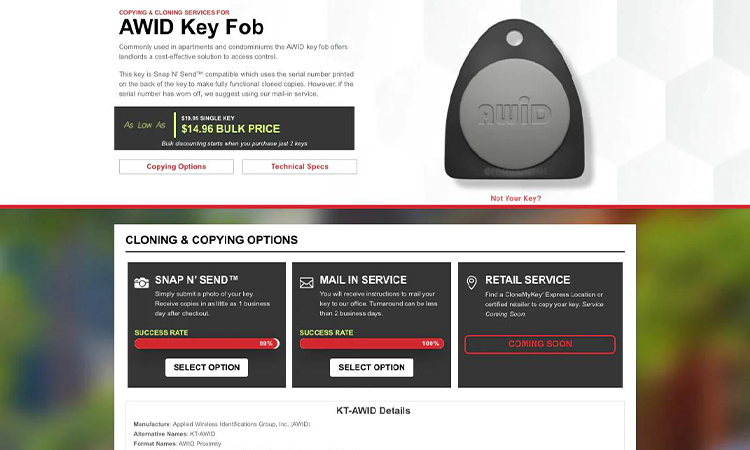
You can search for companies specializing in duplicating electronic key fobs. Most of the search sites offer the same type of service. You can compare them carefully and choose the right one.
When you choose the company that will help you to duplicate your key fob, there is one more thing you need to prepare. That is to prepare in advance the information proving that you are the owner of the key. Online systems often require proof of residency or ownership of the property the keychain will open. Assuming you need to copy the RFID-based key fob for the property, you can scan and upload your old utility bills. However, a unique VIN will be required if it is a vehicle.
The final step is to pay the fee and mail your key fob. Once all the previous information has been filled out and verified, you will need to pay for the replacement key fob. Usually, a duplicate key fob or key card costs about $20. The price may be relatively low if you need to make a large number of duplicate key fobs. After settling the fee, mail your key fob according to mailing requirements. Then you can wait patiently for your new key fob to arrive.
Reproduction Through a Locksmith or By Contacting the Manufacturer

You can do this by calling your local locksmith for help. Many unencrypted electronic key fobs can be reproduced by a locksmith. Most locksmiths have all the tools to replicate.
Suppose your key fob is dedicated to a car or private residence and is encrypted. Then it can only be duplicated by the original manufacturer. These duplicate key fobs from the manufacturer can be very expensive. Depending on the number of functions performed by different models, they can charge anywhere from $50-$400.
Purchase RFID Writer Duplication
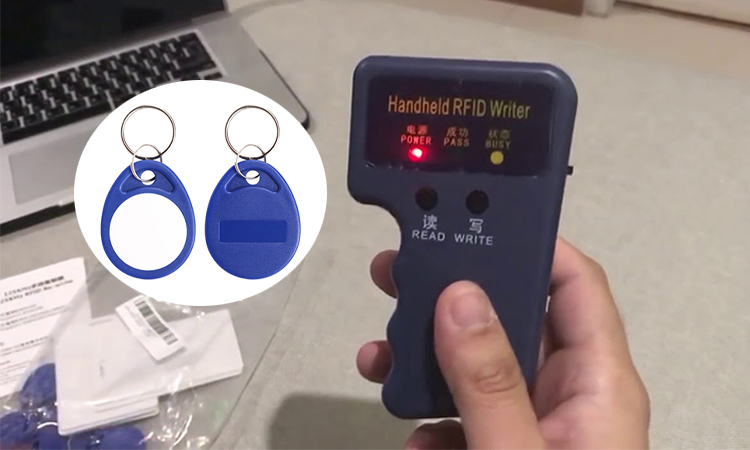
If you don’t want to look for help from other companies out there, you can purchase RFID writers online. These devices can typically read and write unencrypted 125KHz key fobs and cards. Prices range from $20-$50.
Of course, blank 125KHz key fobs are also essential. 125KHz key fobs are mostly used for access control to office and apartment buildings. You can get a duplicate key fob by reading the old one and writing the new one.
Copy to Your IPhone and Android
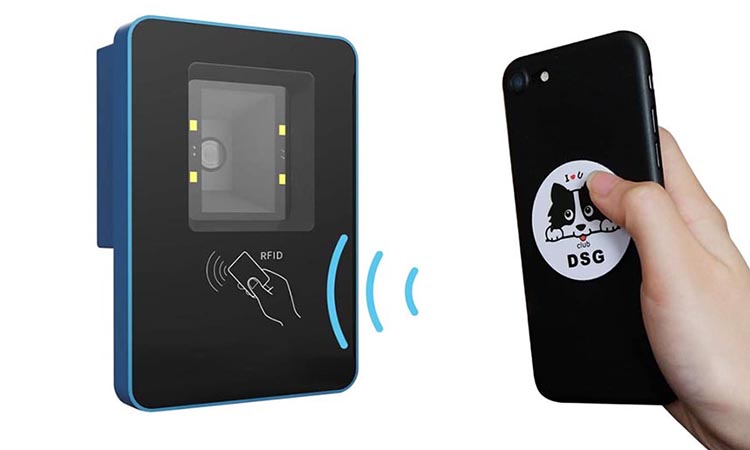
Copy RFID key fobs to stickers. Key fobs are usually based on RFID technology instead of NFC, so they cannot be copied directly to iPhone or Android via the app. The only way to copy RFID keys to your smartphone is to copy them to RFID stickers. Then, You can attach the sticker to your smartphone and use it. It can be used as a key fob for your apartment. The operation is very simple and takes very little time.
Most large companies today use encrypted RFID-based key fobs. They all have their corresponding IDs on them. It is very difficult for criminals to copy key fobs to commit crimes.
Science: Besides RFID Key Fobs, What Options Do We have?
Wiegand Key Fob
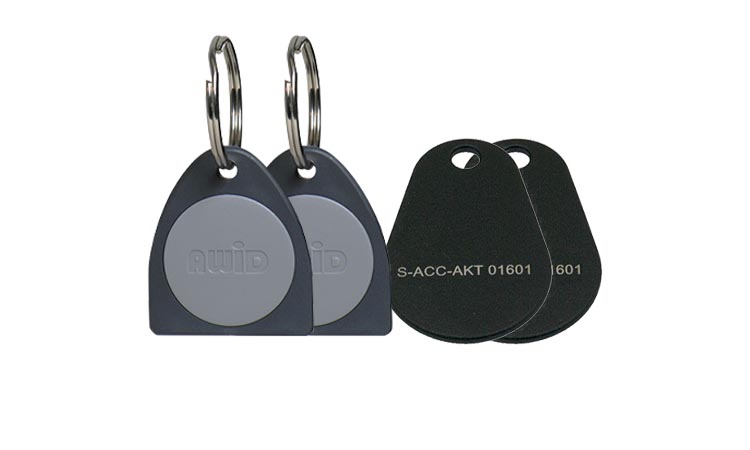
It was one of the first key fob types in 1970. It mainly uses a unique binary data storage technology. Its data, once programmed, cannot be reprogrammed or erased again. In the early days, People often used it in conventional security systems. The Wiegand key fob does not contain a microchip or other fragile components. Thus it will be more durable. However, it is an obsolete option for modern life.
Swipe Key Fob
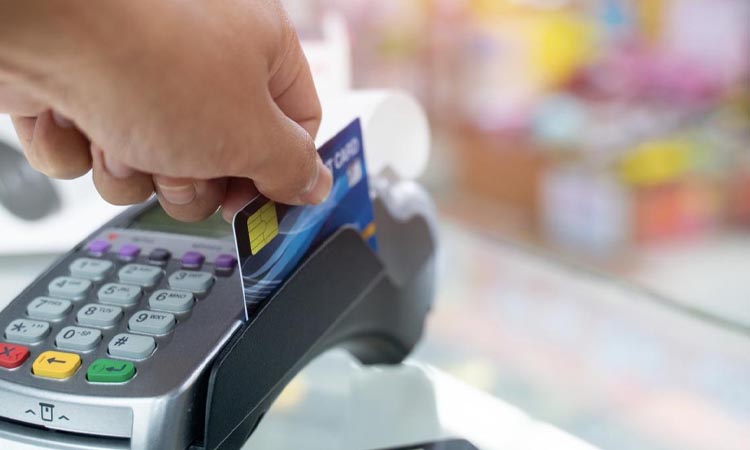
The swipe key fob is the most classic credit card type system. This type of key fob has a magnetic strip around the edge for data storage. The cardholder can unlock the door or pay for the transaction by using a specific magnetic reader. It allows individual tracking and is used for auditing purposes. It is commonly used in card access control systems. It is particularly suitable for large organizations with many people visiting the same area.
RFID key fobs have come a long way in transforming access control systems. Their evolution has brought myriad benefits, including convenience, enhanced security, seamless integration, and tracking capabilities. As technology advances, RFID-based key fobs will likely become even more versatile and prevalent, catering to the ever-growing need for efficient and secure access management. Whether it is RFID or regular key cards, they help companies better protect their assets. RFID can also be used in various fields such as retail, healthcare, logistics, etc.
About RFID Key Fob Problem
- Q1: What is an RFID key fob, and how does it differ from traditional keys?
- A1: An RFID key fob is a small, portable device with radio frequency identification technology for access control. Unlike traditional keys, RFID key fobs do not require physical insertion or contact with a lock or reader. They communicate wirelessly with RFID readers, allowing for convenient and contactless authentication.
- Q2: How does an RFID key fob work in an access control system?
- A2: An RFID key fob transmits unique identification data to an RFID reader via radio waves. The reader captures the transmitted data and sends it to the access control system for verification. Based on the verification results, the system grants or denies access to the user.
- Q3: Are RFID key fobs more secure than traditional keys?
- A3: RFID key fobs offer enhanced security features compared to traditional keys. They incorporate encryption algorithms, unique identifiers, and anti-tampering mechanisms, making them more difficult to clone or counterfeit. Additionally, lost or stolen RFID key fobs can be deactivated from the access control system, providing an added layer of security.
- Q4:Can RFID key fobs be easily duplicated or counterfeited?
- A4: Modern RFID key fobs employ advanced security measures to prevent duplication or counterfeiting. The encryption algorithms and unique identifiers embedded in the key fobs make it significantly challenging for unauthorized individuals to reproduce or tamper with them.
- Q5: Can RFID key fobs be integrated with mobile devices?
- A5: Yes, RFID key fobs can be integrated with mobile devices through mobile applications or Near Field Communication (NFC) technology. This integration allows users to utilize their smartphones as virtual key fobs, providing a seamless and convenient access control experience.
- Q6: What are the advantages of using RFID key fobs for access control?
- A6: RFID key fobs offer several advantages, including convenient and contactless authentication, efficient access management, enhanced security measures, seamless integration with existing systems, tracking and monitoring capabilities, flexibility in design, and improved user experience and satisfaction.
- Q7: How do RFID key fobs enhance convenience for users?
- A7: RFID key fobs eliminate the need for physical keys, eliminating the hassle of carrying or losing them. Users can simply present their key fob near a reader for quick and effortless access. This convenience is particularly beneficial in high-traffic areas or situations where hands-free access is desired.
- Q8: Can RFID key fobs be used for tracking and monitoring purposes?
- A8: Yes, RFID key fobs can be leveraged for tracking and monitoring. Each key fob has a unique identifier, allowing administrators to track entry and exit logs, monitor user activity, and gain valuable insights into access patterns and occupancy rates.
- Q9: Are there different types of RFID frequencies used in key fobs?
- A9: Yes, RFID key fobs operate on different frequencies, including Low Frequency (LF), High Frequency (HF), and Ultra-High Frequency (UHF). The choice of frequency depends on factors such as reading distance requirements, anti-collision capabilities, and the specific application of the access control system.
- Q10: What security measures are in place to protect data transmitted by RFID key fobs?
- A10: RFID key fobs employ encryption algorithms to protect the data transmitted between the fob and the reader. This encryption ensures that the transmitted information remains secure and inaccessible to unauthorized parties.


